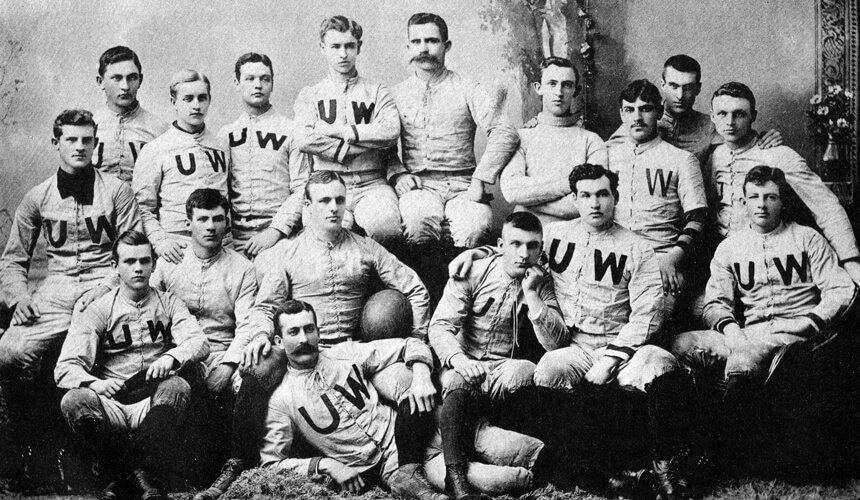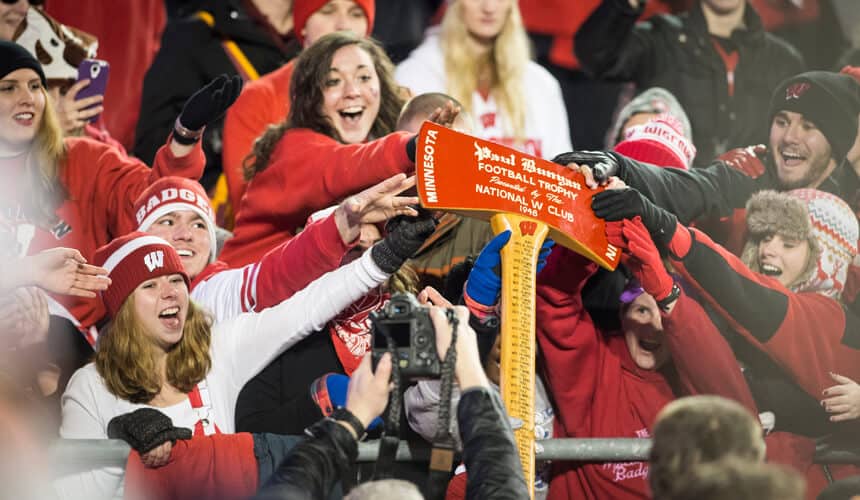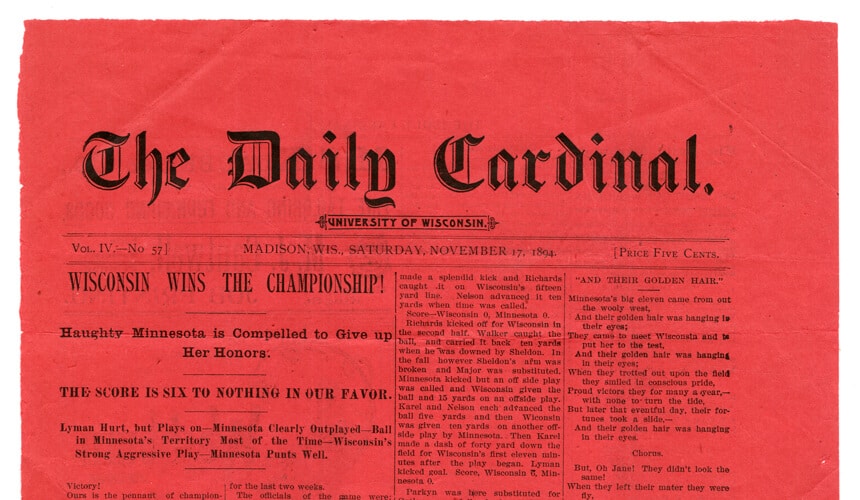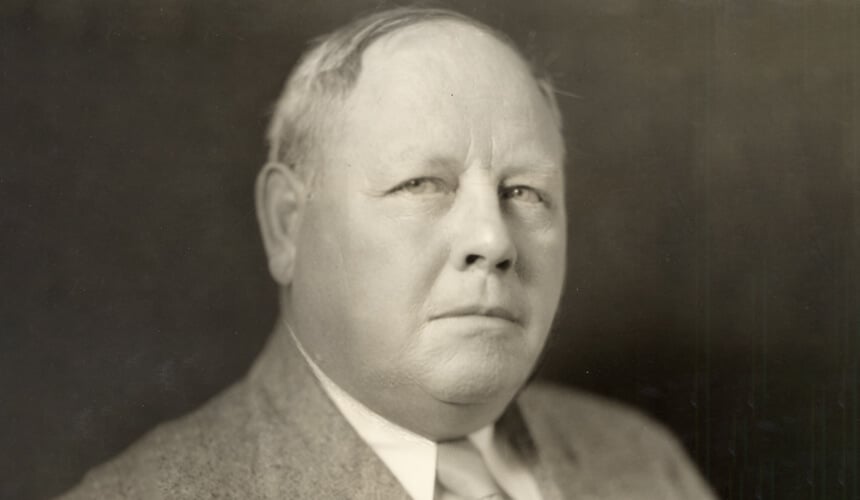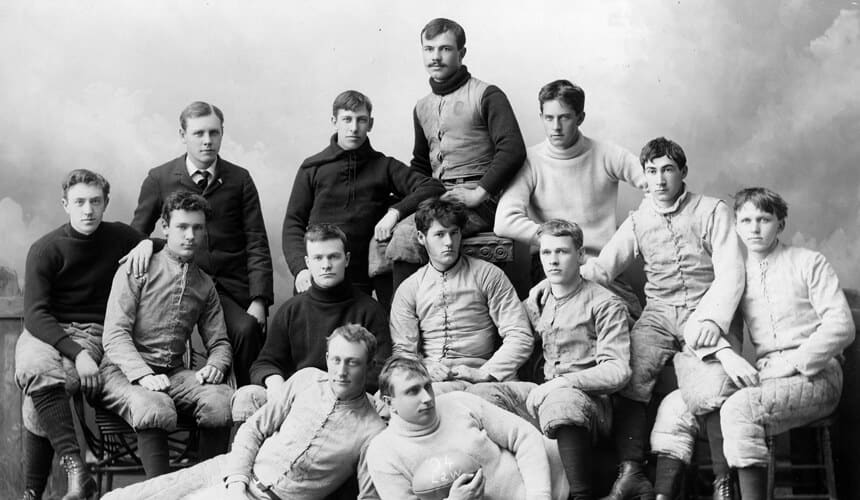Minnesota Rivalry
Fighting Tooth and Tail
A team of plucky upstarts.
A domineering rival.
A hero with an axe to grind.
Bacon.
The story behind the Wisconsin-Minnesota football rivalry has all the makings of a modern sports epic. And it started with the most humiliating defeat in Badger football history.
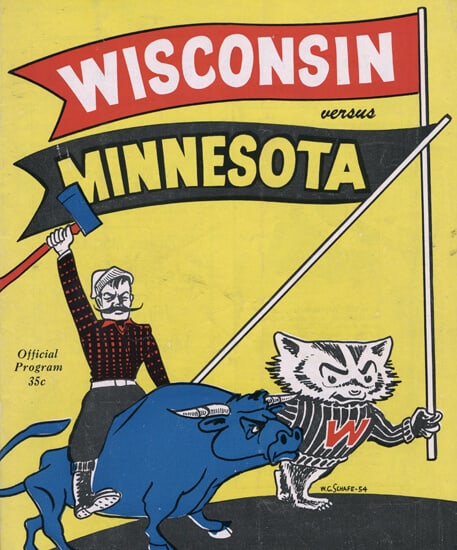
Image courtesy of the UW Digital Collections.
On November 15, 1890, the Badgers traveled to Minneapolis to face the Minnesota Golden Gophers for the first time in what would become the longest-running Division I rivalry in college football. The Gophers were having their first definitively successful season since forming in 1882, though the Badgers, too, were feeling confident. Wisconsin’s football program was only in its second year, but the team had just come off its first win, an outstanding 106–0 victory over Whitewater Normal (now UW-Whitewater).
But whatever hope Wisconsin brought to the field quickly vanished. The Gophers handed the Badgers a devastating 63–0 loss that’s still the most lopsided defeat in Wisconsin football history. The team went on to lose the rest of its season, and though the Badgers rallied for a winning record in 1891, Minnesota yet again came out on top when the two met.
At the same time, the Badgers’ would-be hero was busy fighting turf battles of his own. Theron “Tule” Upson Lyman LLB 1894 spent four years playing and sometimes coaching at Iowa College (now Grinnell), and he occasionally coached Nebraska’s new football team, too. Minnesota crushed its southern neighbor as badly as its eastern one, and finally Lyman had had enough. He transferred to Wisconsin with one purpose in mind: beat the Gophers. (He also picked up a law degree.)
It took two years and a new head coach — Hiram Stickney, also a Grinnell transplant — but in 1894, the Badgers did it: Minnesota fell, 6-0.
“We brought home the bacon. And kept it.”
The rivalry evolved into a tradition, and the two schools have played against each other every year except in 1906, when President Theodore Roosevelt suspended college football due to safety concerns.
In 1930, a new element was introduced: the Slab of Bacon. A small wooden trophy awarded to the victors, the Slab suggested the idea that the winning team “brought home the bacon.” It usually went home to Minneapolis. In 1943, Peg Modie Watrous BA 1931 “lost” the bacon slab in the frenzy after yet another Minnesota win.
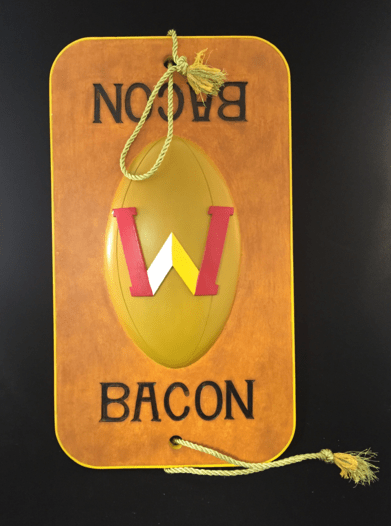
A search ensued until 1948, when a new trophy was crafted: Paul Bunyan’s Axe, which is still the totem used for today’s Badger-Gopher battles. (Coincidentally, the Paul Bunyan murals in Memorial Union were painted by Peg’s husband, art professor James Watrous BA 1931, MA 1933, PhD 1939.)
In 1994, athletics intern Will Roleson found the Slab of Bacon in a Camp Randall storage room. “This leather briefcase caught my eye, because it was so different from everything else in there,” Roleson said. “I opened up the case, and there was the Slab of Bacon. No one really seemed to know what it was.” Curiously, game results through 1970 were carved onto the slab, which is now on display in the Badger football offices.
“We brought home the bacon,” long-time Wisconsin coach and athletics director Barry Alvarez once said in an interview two years before the bacon reappeared in the storage room. “And kept it.”
The original Paul Bunyan’s Axe was retired from duty in the early 2000s and donated to the College Football Hall of Fame. It was replaced by a fresh axe — with plenty of space to carve the results of the many games yet to come.
 50° F
50° F